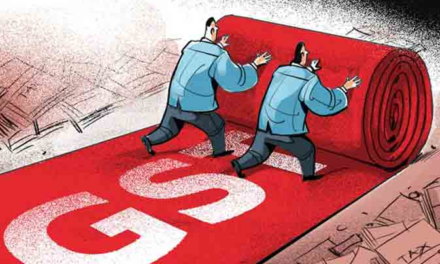Few decades back, a career meant becoming an engineer, a doctor, an IAS officer or a manager and for most women, it was the tried and trusted profession of lecturers and teachers. But not anymore! Times have changed. Now opportunities are galore – restaurateur, painter, writer, landscape designer, cake specialist, wedding planner, astrologer, photographer, radio jockey, chocolatier – you name it! Even in the regular professions, more and more people are taking the consultant or entrepreneur route so that they have more control over the quantity and quality of work they do.
 One factor that most of these off beat careers share is irregular income. So how does one cope with such a flow of income that is not steady – sometimes more, sometimes less and sometimes none? How does one provide for expenses which unfortunately may not match the irregularity of income and are incurred irrespective?
One factor that most of these off beat careers share is irregular income. So how does one cope with such a flow of income that is not steady – sometimes more, sometimes less and sometimes none? How does one provide for expenses which unfortunately may not match the irregularity of income and are incurred irrespective?
Having been an entrepreneur myself, I have experienced this first hand and can tell you that only you can find the system that works best for you. Let me share the method I have experimented and used successfully and maybe that can be a basis for yours.
First create a buffer for this profession, a few months before you quit a salaried/steady income job. This buffer should be equal to at least 2-3 months of estimated expenses. If your new profession is capital intensive, create a separate buffer for all the initial capital outlay to get it started.
If your salary is a regular contributor for meeting any household expense, this monthly contribution multiplied by the time period you don’t foresee any income receivable, should be added to the buffer. This will safeguard you from any anxiety over meeting the daily household expense and the mental pressure to start performing in the new profession.
Now, manage your monthly cashflows. The amount of money earned can vary month to month, but your expenses are generally more or less constant.
· Step 1 – Make a list of these expenses – a budget so to say. Try and capture as many expenses as possible.
· Step 2 – Arrive at a final figure X that is your expense each month.
· Step 3 – Prioritise the list of items which make up your monthly expenses in order of their importance (and not urgency).
· Step 4 – Create two bank accounts – A and B.
o Account A or your ‘office/business’ account is where you bank all income received.
o Account B or your ‘personal account’ will be like your salary account. This account should be used to pay for all the business expenses – personal or otherwise.
From Account A, you should transfer an amount equal to figure X to Account B every month. So the figure X becomes the salary you pay yourself each month and what you use for your ongoing expenses in order of importance that you have already established.
The months your income is more than figure X i.e. expenses, the excess accumulates in Account A. When your income is less than figure X, then the accumulated excess of previous months can be used to make good the difference.
Your excess income gets accumulated in Account A and is available for rainy days when expenses are more than income or there are some contingencies, and for further investments.
The idea is to bring some discipline into your inflow and outflow. Paying yourself a salary will discipline your spending, while allowing you to build a buffer for the months when the income is lower. This exercise also gives you a cue of funds available for any expansion plans.
However, there are some points you need to consider.
1. This exercise is based on some assumptions and estimates. Assumption that this will be your expenses every month, estimate that this year this is the least income you will receive in any month. Estimates and assumptions can be wrong and will often need to be adjusted. Don’t stress about that as it is fine if tweaking the Figure X is required from time to time.
2. Don’t get tempted to spend more during the months you earn more. This is one the biggest pitfalls of varying income. It will be a good idea to reward yourself for good months but keep the celebration modest.
3. Practise being prudent – there is no shortcut to this! Scout for deals; try to reduce fuel expenditure – petrol/diesel, power consumption and gas. Eat out less, rent movies, instead of watching them on big screen.
4. Business Account A is for rainy days – it is Not to be splurged.
5. Include medical insurance premiums that you pay as a part of your expense. When you are employed with a firm or a company, often you are covered by the company health plan. Being self-employed you do not have the luxury of this and have to invest in an adequate health plan for yourself and every member of your family.
6. Treat any financial investment also like an expense and set aside amounts every month for this. Not having any PF, superannuation you are more vulnerable to the lack of retirement savings. So it is very important for you to prioritise long term retirement planning by investing in schemes like PPF, NPS etc.
7. Don’t forget TAXES. When you are a salaried employee, TDS is cut automatically from your salary each month. Now you need to do this yourself by setting aside an amount for taxes each month or each quarter.
If you are not financially or mentally prepared to take the plunge into the profession, take it up as a project on the side. This will give you clarity on its feasibility. But remember, nothing works till you put your heart in it.
Managing irregular income stream has its challenges but it is definitely doable. All that you need is some discipline and planning. You can scout around for information from existing businesses for estimates. Do remember that estimates are dependent on scale of operations and also location. Seek help of a financial advisor to help you plan the finances for your offbeat career if need be.
Image Source: http://christianpf.com/




